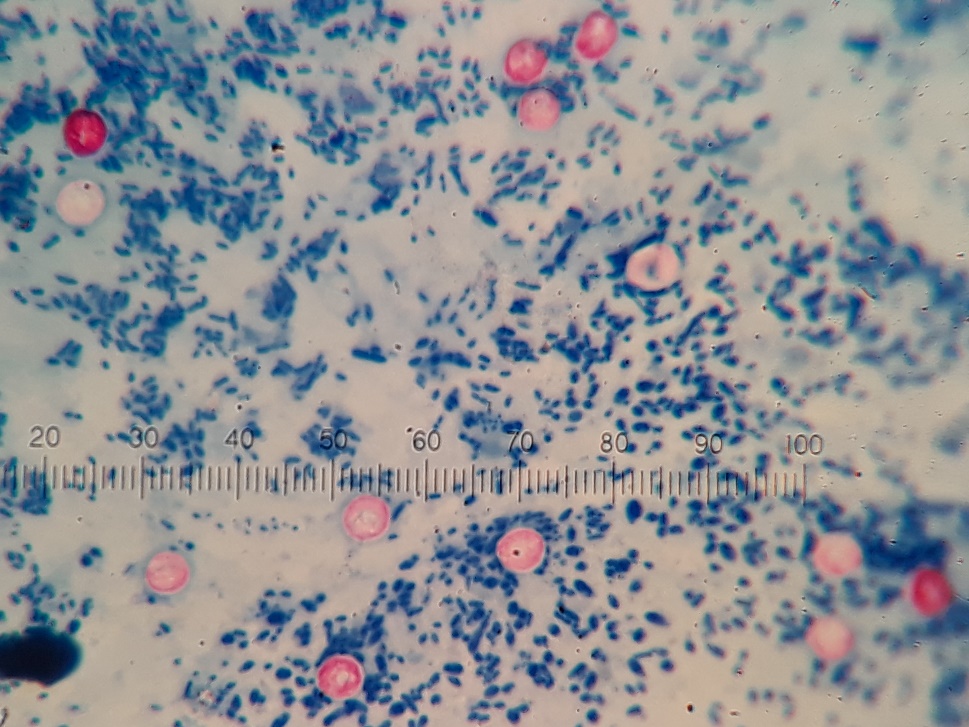Year
A 2-year-old boy from a peri-urban slum presents with 8 days of profuse watery diarrhoea (6–7 episodes/day), low-grade fever, and reduced appetite. No blood or mucus in stool. On examination, mild dehydration was noted, weight <3rd percentile. No clinical improvement after empiric treatment with antibiotics. Stool microscopy with modified Ziehl-Neelsen stain showed the following.
- What is the likely diagnosis?
- What is the treatment of choice?
- How is it transmitted?


Answer
- What is the likely diagnosis?
Cryptosporidiosis due to Cryptosporidium spp. The modified Ziehl-Neelsen stain shows acid-fast, round oocysts ~4- 6 µm in size. - How is it transmitted?
Cryptosporidium infection is acquired through the faecal-oral route, primarily by ingesting water or food contaminated with infectious oocysts. Transmission can also occur via person-to-person contact, especially in settings with poor hygiene, or through contact with infected animals. The oocysts are highly resistant to chlorine, allowing them to survive in treated water and cause outbreaks. In immunocompromised individuals, the parasite can also cause autoinfection through thin-walled oocysts, leading to persistent and severe diarrhoea. - What is the treatment of choice?
The illness is self-limiting in most immunocompetent individuals and requires only fluid replacement. With Oral rehydration therapy, treatment with nitazoxanide- 100 mg orally twice daily for 3 days in children over 1 year of age and 500 mg twice daily for 3 days in adults is recommended for severe cases (More than 10 loose, watery stools in 24 hours)1. In HIV infected individuals, a longer duration of up to 14 days is recommended2. Zinc supplementation, 20 mg daily for 14 days, and nutritional support are also provided as a part of supportive care. Caregivers should be counselled on using/ storing safe drinking water, maintaining hand hygiene, and ensuring continued feeding during illness.
References:
- Rossignol JFA, Ayoub A, Ayers MS. Treatment of Diarrhea Caused by Cryptosporidium parvum: A Prospective Randomized, Double-Blind, Placebo-Controlled Study of Nitazoxanide. The Journal of Infectious Diseases. 2001 Jul 1;184(1):103–6.
- Cryptosporidiosis: Adult and Adolescent OIs | NIH [Internet]. 2023 [cited 2025 May 8]. Available from: https://clinicalinfo.hiv.gov/en/guidelines/hiv-clinical-guidelines-adult-and-adolescent-opportunistic-infections/cryptosporidiosis
